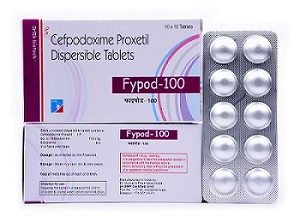Description
PHARMACOLOGY
PHARMACOKINETICS:
Absorption: Owing to hepatic first-pass metabolism, its bioavailability is only about 60%.
Distribution: Plasma protein binding of ondansetron as measured in vitro was 70% to 76%, over the pharmacologic concentration range of 10 to 500 ng/mL. Circulating drug also distributes into erythrocytes.
Metabolism: Ondansetron is extensively metabolized in humans, with approximately 5% of a radiolabeled dose recovered as the parent compound from the urine. The primary metabolic pathway is hydroxylation on the indole ring followed by subsequent glucuronide or sulfate conjugation.
Elimination: In adult cancer patients, the mean ondansetron elimination half-life was 4.0 hours, and there was no difference in the multidose pharmacokinetics over a 4-day period.
INDICATIONS:
- Prevention of nausea and vomiting associated with highly emetogenic cancer chemotherapy, including cisplatin ≥ 50 mg/m.
- Prevention of nausea and vomiting associated with initial and repeat courses of moderately emetogenic cancer chemotherapy.
- Prevention of nausea and vomiting associated with radiotherapy in patients receiving total body irradiation, single high-dose fraction to the abdomen, or daily fractions to the abdomen.
- Prevention of postoperative nausea and/or vomiting. As with other antiemetics, routine prophylaxis is not recommended for patients in whom there is little expectation that nausea and/or vomiting will occur postoperatively. In patients where nausea and/or vomiting must be avoided postoperatively, ZOFRAN Tablets, ZOFRAN ODT Orally Disintegrating Tablets, and ZOFRAN Oral Solution are recommended even where the incidence of postoperative nausea and/or vomiting is low.













